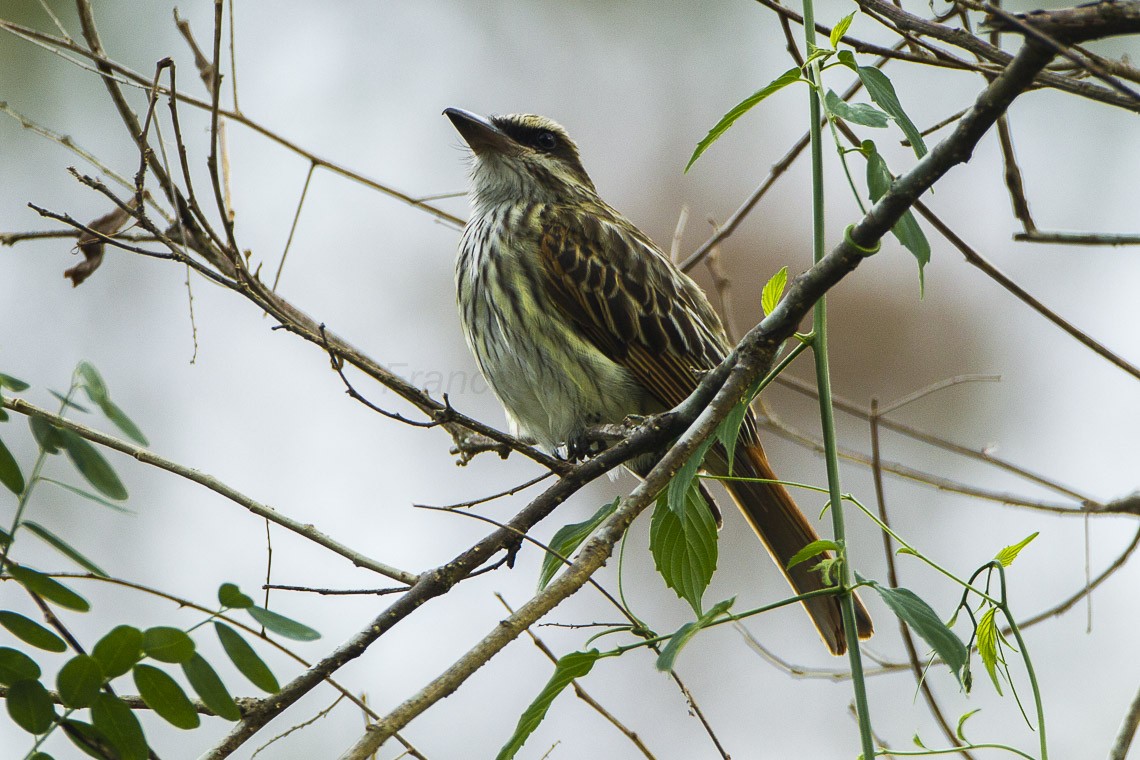Streaked Flycatcher
A species of Sulphur-bellied Flycatchers and Allies Scientific name : Myiodynastes maculatus Genus : Sulphur-bellied Flycatchers and Allies
Streaked Flycatcher, A species of Sulphur-bellied Flycatchers and Allies
Botanical name: Myiodynastes maculatus
Genus: Sulphur-bellied Flycatchers and Allies
Content
Description General Info
 Photo By Francesco Veronesi , used under CC-BY-SA-2.0 /Cropped and compressed from original
Photo By Francesco Veronesi , used under CC-BY-SA-2.0 /Cropped and compressed from original Description
The streaked flycatcher is 22 cm (8.7 in) long, weighs 43 g (1.5 oz) and has a strong black bill. The head is brown with a concealed yellow crown patch, white supercilium and dusky eye mask. The upperparts are brown with darker brown streaks on the back, rufous and white edges on the wings, and wide chestnut edges on the rump and tail. The underparts are yellowish-white streaked with brown. Sexes are similar, but immature birds are brown where the adult is black. M. m. solitarius has black rather than brown streaking above and below. The streaked flycatcher is a conspicuous bird, with a noisy sqEEE-zip call. It is very similar in appearance to the less widespread sulphur-bellied flycatcher. The streaked flycatcher has a heavier bill, lighter yellow belly, pink basal half of the lower mandible and creamy (not white) superciliary. 
Size
23 cm
Nest Placement
Tree
Feeding Habits
Streaked Flycatcher predominantly consumes insects such as grasshoppers, true bugs, caterpillars, beetles, cicadas, and wasps, occasionally supplementing its diet with small lizards and berries. Its foraging method involves active pursuit while flying or gleaning from foliage. Unique adaptations include targeting cicadas and catching flying ants.
Habitat
Streaked Flycatcher typically resides in a variety of forested habitats, including evergreen and semi-deciduous forests, várzea forests, forest edges, and areas with scattered tall trees. These birds are also found in mangroves and selectively navigate environments based on ecological factors. Across its broad distribution, streaked Flycatcher is known to occupy these habitats consistently throughout the year.
Dite type
Insectivorous
General Info
Feeding Habits
Bird food type
Distribution Area
This species breeds from eastern Mexico, Trinidad and Tobago south to Bolivia and Argentina. The southern subspecies M. m. solitarius migrates to Venezuela and the Guianas from March to September during the austral winter. It is found at the edges of forests and cocoa plantations. Common across its wide range, this species is not considered threatened by the IUCN. 
Species Status
Not globally threatened.
Scientific Classification
Phylum
Chordates Class
Birds Order
Perching birds Family
Tyrant flycatchers Species
Streaked Flycatcher